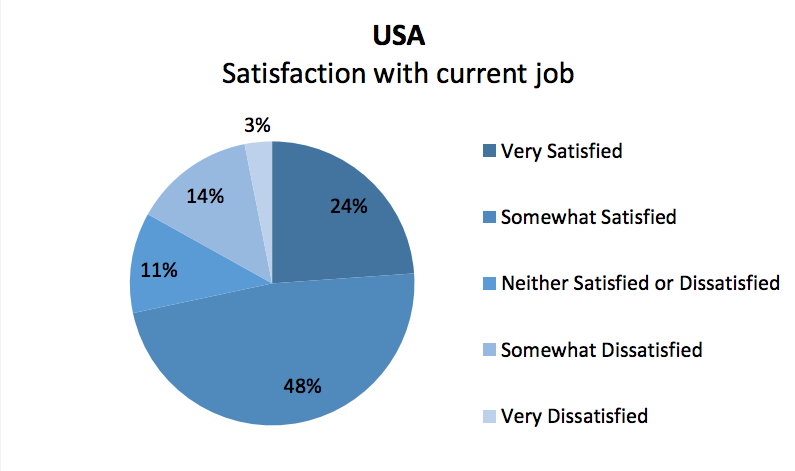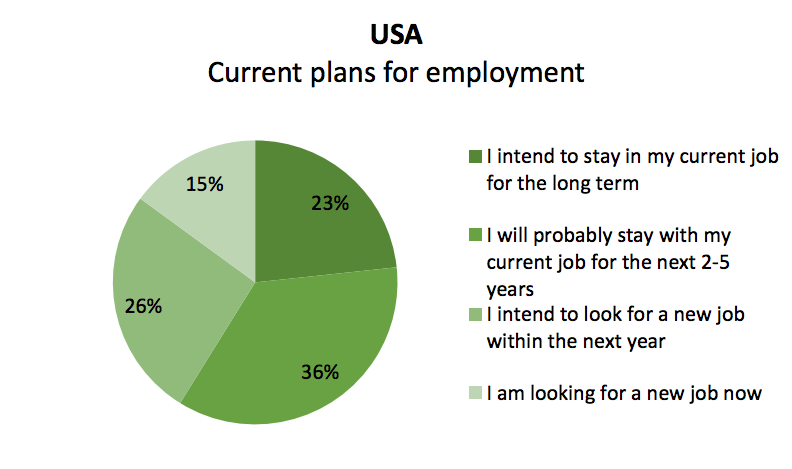#YourCareer : 5 Ways The Over 50 Worker Can Benefit From The Great Resignation. Over 50 and Think that it’s Too Late to make a Career Change?? THink AGain!
A new survey by Resume Builder shows that this hot job market is causing the over 50 worker and even retirees to consider new career moves. Resume Builder surveyed 1,100 aged 54+, both retired and employed, and found that:
· 40% of the employed have considered switching jobs;
· 34% of retirees have considered going back to work; and
· 20% of retirees have been asked to return to past employers.
If you’re over 50 and have been thinking that it’s too late to make a career change (that’s just one of five common myths), these survey results are a bright green light to reconsider old assumptions and move forward with your desired changes. You don’t even have to leave your job.
1 – Negotiate for more money
News about the Great Resignation is causing companies to worry about retention. This gives you leverage, even if your manager doesn’t think you specifically are a flight risk. Your company doesn’t want to lose anyone because they worry they can’t replace workers quickly enough — or ever.
If you’re getting recruiter calls, find out what your market value is. Don’t issue an ultimatum to your manager (they may call your bluff). Instead, let them know how much you enjoy working with them, but tell them what you’re hearing about the market and ask what can be done. Remind them that hiring costs real money in lost productivity and recruiting fees. Remind them about your proven results and unique value. Have alternatives ready if the salary is non-negotiable – a retention bonus or a perk (e.g., a course you want to take) you would otherwise pay for.
Like this Article? Share It! You now can easily enjoy/follow/share Today our Award-Winning Articles/Blogs with Now Over 2.5 Million Growing Participates Worldwide in our various Social Media formats below:
LinkedIn: https://www.linkedin.com/in/chris-g-laughter-b46389198/
Twitter: Follow us @ firstsunllc
Best Daily Choice: Follow the Best of FSC Career Articles/Blogs @
https://twitter.com/search?q=bestoffscblog&src=typeahead_click
Question: Want the ‘the best/current articles/blogs on the web’ on Job Search, Resume, Advancing/Changing your Career, or simply Managing People?
Answer: Simply go to our FSC Career Blog below & Type(#Jobsearch, #Resume, or #Networking) in Blog Search: https://www.firstsun.com/fsc-career-blog/
What Skill Sets Do You have to be ‘Sharpened’ ?
Did you know? First Sun Consulting, LLc (FSC) is celebrating over 30 years in the delivery of corporate & individual outplacement services & programs to over 1200 of our corporate clients in the U.S., Canada, UK, & Mexico!
We here at FSC want to thank each of corporate partners in the opportunity in serving & moving each of their transitioning employee(s) rapidly toward employment !
Article continued …
2 – Start consulting on the side
If you’d rather not rock the boat with your own employer, focus on the other companies who are having difficulty hiring and looking to consultants, freelancers and temps to fill the gap. If it’s work that can be done remotely and/or off hours, you could build a side consulting business. Target companies in a different industry or geography so there is no conflict of interest. Or target companies of a different size or with slightly different needs.
You may find that your employer will even help you get established. I once worked with a recruiting firm that only hired at the executive level. To keep one of their star performers challenged and engaged, they supported her in building her own practice to hire at the middle management level, even going as far as funneling leads to her. It benefited the company in two ways: 1) it kept that star performer from leaving them and 2) it brought their large clients closer to them because instead of just saying No when they had a middle management need or referring them to outside agencies, they could refer them to one of their own.
3 – Start your career change with a lateral move
If you don’t want to continue at your current job, by all means take advantage of the hot job market to explore leaving, but also consider making a lateral move within your current company. A lateral move means that you move into a new department, giving you the chance to work in a different role or with different clients or in a different location. It’s a way of changing your career but in a less disruptive way, since you’re still keeping your tenure at the company. This means your length of service, your relationships and your credibility remain intact, but you still have a chance to stretch and learn something new.
Some companies are better than others about supporting lateral moves. You may have a selfish manager who cares less (or not at all) about your career development and just sees your leaving as a disruption to them. However, some managers are supportive, and some companies have lateral movement baked into the culture. They recognize that they’d rather retain good performers somewhere in the company.
4 – Start your career change with a new business
If you don’t think your company will support a lateral move, or you’re at a small place with nowhere to go, then build a side gig that focuses on whatever you were hoping to do with a lateral move. You could start on a pro bono basis. If you’re thinking about a sales career, volunteering to fundraise will give you much-needed practice developing prospects, talking about money and making the ask. If you’re looking to consult, subcontract with an established consultant who has more work than they can handle and can perhaps be a mentor to you.
If you’re not sure which direction to go, at least start blocking your calendar for the days and times you’ll work on that new business whenever it’s defined. You can use the time blocks for research into opportunities or creative exercises to figure out what to do next. If the time reserved for your new business means you spend less money going out, then you can earmark the savings to your dream fund.
5 – Negotiate flexibility or a sabbatical to try something new
If you’re not sure what you should do as a next step, negotiate for time to think about it. Negotiate a part-time schedule so you can use the extra hours to build the side business or take classes in different areas of interest. Negotiate a sabbatical if you need to get away and clear your head.
At the very least, you’re practicing much-needed negotiation skills. You’re breaking up your everyday work routine, which might unleash new ideas for what to do next. If the new schedule affords you time in a new location, you can explore geo-arbitrage (living in a low-cost area on a big city salary), which may allow you to retire earlier and on less.
Forbes.com | November 3, 2021 | Caroline Ceniza-Levine








